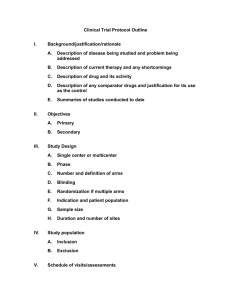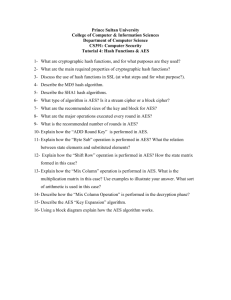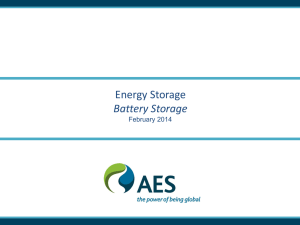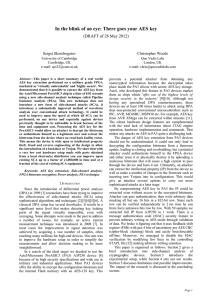AbstractID: 3492 Title: X-ray micro-angiographic and fluoroscopic image-guided
advertisement
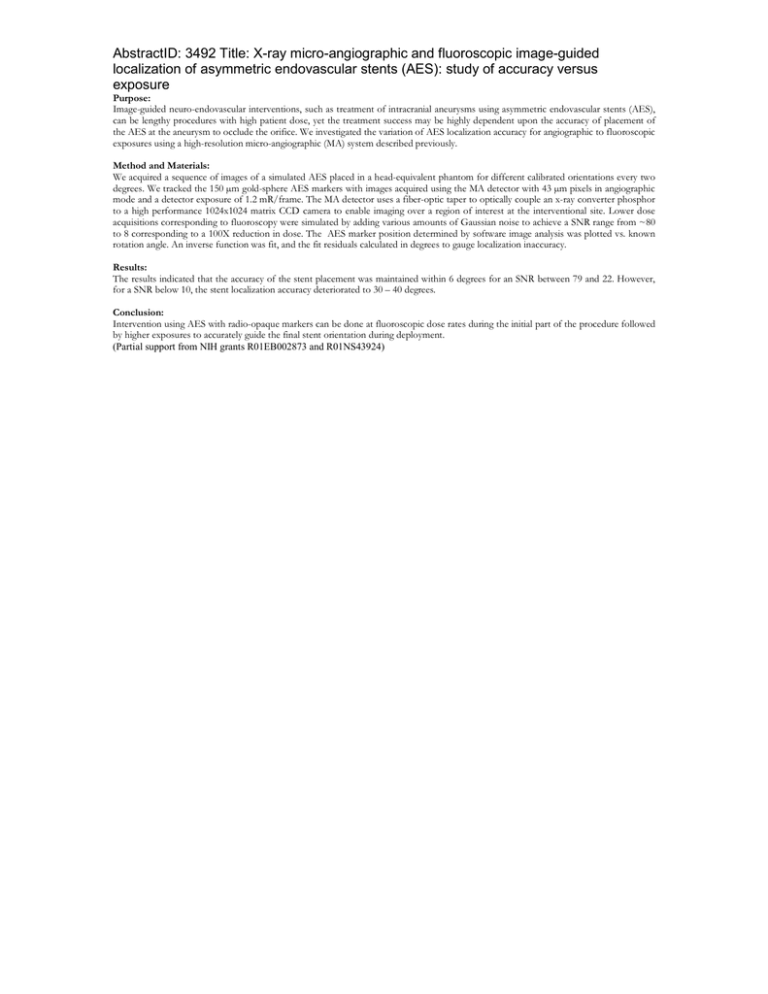
AbstractID: 3492 Title: X-ray micro-angiographic and fluoroscopic image-guided localization of asymmetric endovascular stents (AES): study of accuracy versus exposure Purpose: Image-guided neuro-endovascular interventions, such as treatment of intracranial aneurysms using asymmetric endovascular stents (AES), can be lengthy procedures with high patient dose, yet the treatment success may be highly dependent upon the accuracy of placement of the AES at the aneurysm to occlude the orifice. We investigated the variation of AES localization accuracy for angiographic to fluoroscopic exposures using a high-resolution micro-angiographic (MA) system described previously. Method and Materials: We acquired a sequence of images of a simulated AES placed in a head-equivalent phantom for different calibrated orientations every two degrees. We tracked the 150 )m gold-sphere AES markers with images acquired using the MA detector with 43 )m pixels in angiographic mode and a detector exposure of 1.2 mR/frame. The MA detector uses a fiber-optic taper to optically couple an x-ray converter phosphor to a high performance 1024x1024 matrix CCD camera to enable imaging over a region of interest at the interventional site. Lower dose acquisitions corresponding to fluoroscopy were simulated by adding various amounts of Gaussian noise to achieve a SNR range from ~80 to 8 corresponding to a 100X reduction in dose. The AES marker position determined by software image analysis was plotted vs. known rotation angle. An inverse function was fit, and the fit residuals calculated in degrees to gauge localization inaccuracy. Results: The results indicated that the accuracy of the stent placement was maintained within 6 degrees for an SNR between 79 and 22. However, for a SNR below 10, the stent localization accuracy deteriorated to 30 – 40 degrees. Conclusion: Intervention using AES with radio-opaque markers can be done at fluoroscopic dose rates during the initial part of the procedure followed by higher exposures to accurately guide the final stent orientation during deployment. (Partial support from NIH grants R01EB002873 and R01NS43924)

